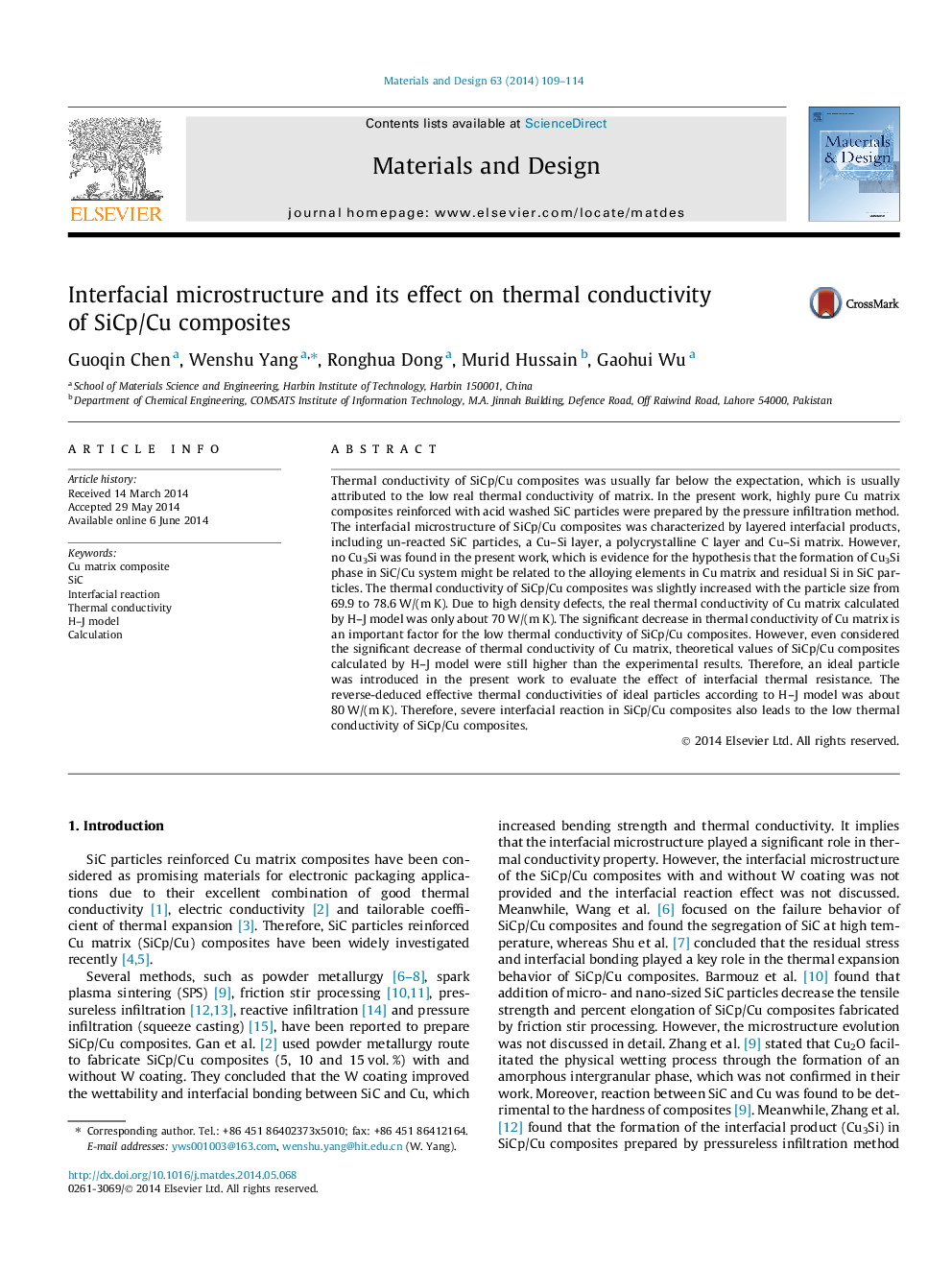| کد مقاله | کد نشریه | سال انتشار | مقاله انگلیسی | نسخه تمام متن |
|---|---|---|---|---|
| 828983 | 1470334 | 2014 | 6 صفحه PDF | دانلود رایگان |

• Interface of SiCp/Cu composites was characterized by layered interfacial products.
• Cu–Si layer and polycrystalline C layer were found in the interfacial area.
• No Cu3Si was found in the present work.
• Decreased TC of Cu matrix is a factor for the low TC of SiCp/Cu composites.
• Severe interfacial reaction also leads to the low TC of SiCp/Cu composites.
Thermal conductivity of SiCp/Cu composites was usually far below the expectation, which is usually attributed to the low real thermal conductivity of matrix. In the present work, highly pure Cu matrix composites reinforced with acid washed SiC particles were prepared by the pressure infiltration method. The interfacial microstructure of SiCp/Cu composites was characterized by layered interfacial products, including un-reacted SiC particles, a Cu–Si layer, a polycrystalline C layer and Cu–Si matrix. However, no Cu3Si was found in the present work, which is evidence for the hypothesis that the formation of Cu3Si phase in SiC/Cu system might be related to the alloying elements in Cu matrix and residual Si in SiC particles. The thermal conductivity of SiCp/Cu composites was slightly increased with the particle size from 69.9 to 78.6 W/(m K). Due to high density defects, the real thermal conductivity of Cu matrix calculated by H–J model was only about 70 W/(m K). The significant decrease in thermal conductivity of Cu matrix is an important factor for the low thermal conductivity of SiCp/Cu composites. However, even considered the significant decrease of thermal conductivity of Cu matrix, theoretical values of SiCp/Cu composites calculated by H–J model were still higher than the experimental results. Therefore, an ideal particle was introduced in the present work to evaluate the effect of interfacial thermal resistance. The reverse-deduced effective thermal conductivities of ideal particles according to H–J model was about 80 W/(m K). Therefore, severe interfacial reaction in SiCp/Cu composites also leads to the low thermal conductivity of SiCp/Cu composites.
Figure optionsDownload as PowerPoint slide
Journal: Materials & Design - Volume 63, November 2014, Pages 109–114